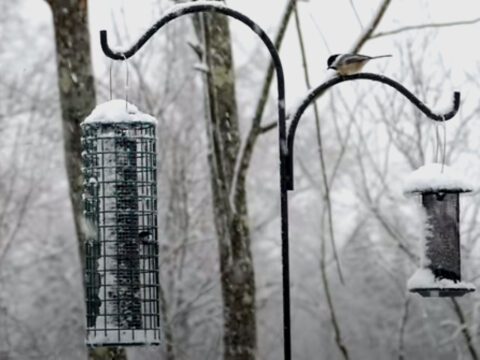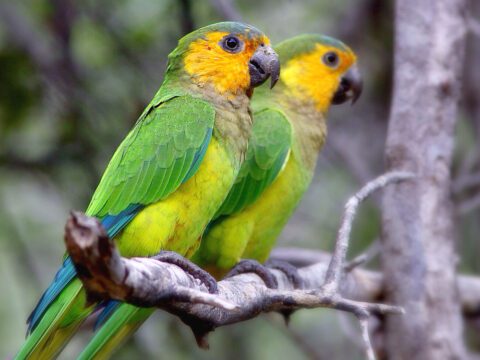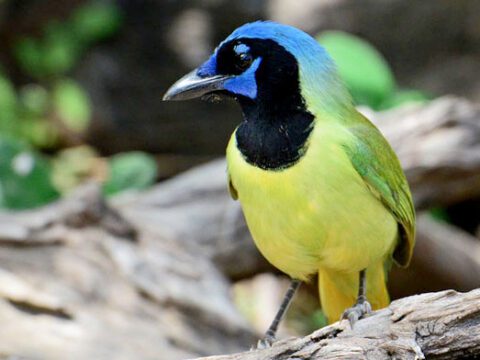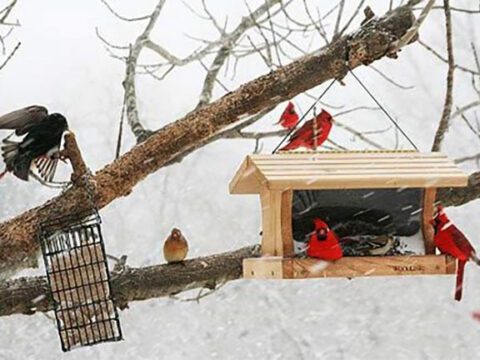Birds Win in World Series of Birding
By Hugh Powell May 21, 2010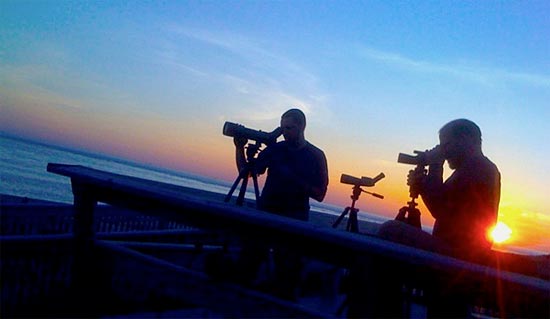
Last weekend, some 70 teams competed in the 27th annual World Series of Birding, including Team Sapsucker and Team Redhead from the Cornell Lab. It was a phenomenal—and phenomenally long—day of birding that began (for the Sapsuckers) with a Barred Owl at midnight and didn’t let up until a reluctant Black Rail called out at 11:28 p.m. The Sapsuckers finished the day with 224 species in the state of New Jersey—good enough to win the Stone Award for the second-highest total (the winners tallied 228; full results here).
I think I still hear team captain Chris Wood kicking himself (or possibly a teammate) for leaving species #225, Monk Parakeet off the official checklist. The team had made an early-hours detour especially to get the bird. But because it’s an unusual species, you have to write it onto the final form rather than checking it off, and they overlooked it at the last minute. One species more or less, their Big Day run is still a monumental birding achievement.
Team Redhead, composed of Cornell students and former students, repeated their first place in the Cape May County division, with 175 species. I was down in New Jersey this year and saw the Redheads’ minivan creep into Jake’s Landing at about 2:30 a.m., where Marsh Wrens and Seaside Sparrows were trading snickers in the reeds and a Barred Owl hooted far away. Eighteen hours later I ran into them again at Cape May Meadows. The sun was all but gone, and the team were cowering inside their hoodies against a solid wall of mosquitoes. They were all smiles though: in the waning light a trio of new birds had stopped by—Gull-billed Tern, Caspian Tern, and White-faced Ibis. Tick, tick, tick—their list hit 175, and they were champions for another year.
At brunch the next morning I was struck by how the World Series of Birding pulls people back year after year. For dozens of birders, this contest was the 10th, 12th, 15th year in a row they’d participated. Perhaps that’s because the real meaning of the day is the celebration of New Jersey’s stunning birding, as well as the millions of dollars this event has raised for bird conservation over the years. And it’s also a tremendous training ground for the crack birders of tomorrow. My jaw dropped when I heard the totals from the winning youth teams: the Subadult Skuas (grade 9–12): 188 species; the Lady Peregrines (grade 6–8): 140 species; and the Merlins (grade 1–5): 119 species. Your heart has rarely been so warm as listening to a fifth-grader read an acceptance speech he’d written the previous night after running a 100+ species Big Day with just a couple of grownups around to drive.
Once again, the Sapsuckers and Redheads pulled down the highest total donations of any team this year, at nearly $200,000 (and there’s still time to raise that total! Donate here). So that makes everyone winners, second only perhaps to the birds themselves, which benefit from work by ardent organizations like the Cornell Lab, New Jersey Audubon, Cape May Bird Observatory, the Wetlands Institute, and others. Thank you to everyone who supported our teams this year.
Read full details of this year’s World Series of Birding here. There’s a wrap-up of the Cornell Lab teams here. More commentary and photos about the big day madness at Team Zeiss Sport Optics blog and WildBird on the Fly blog.

All About Birds
is a free resource
Available for everyone,
funded by donors like you
American Kestrel by Blair Dudeck / Macaulay Library

